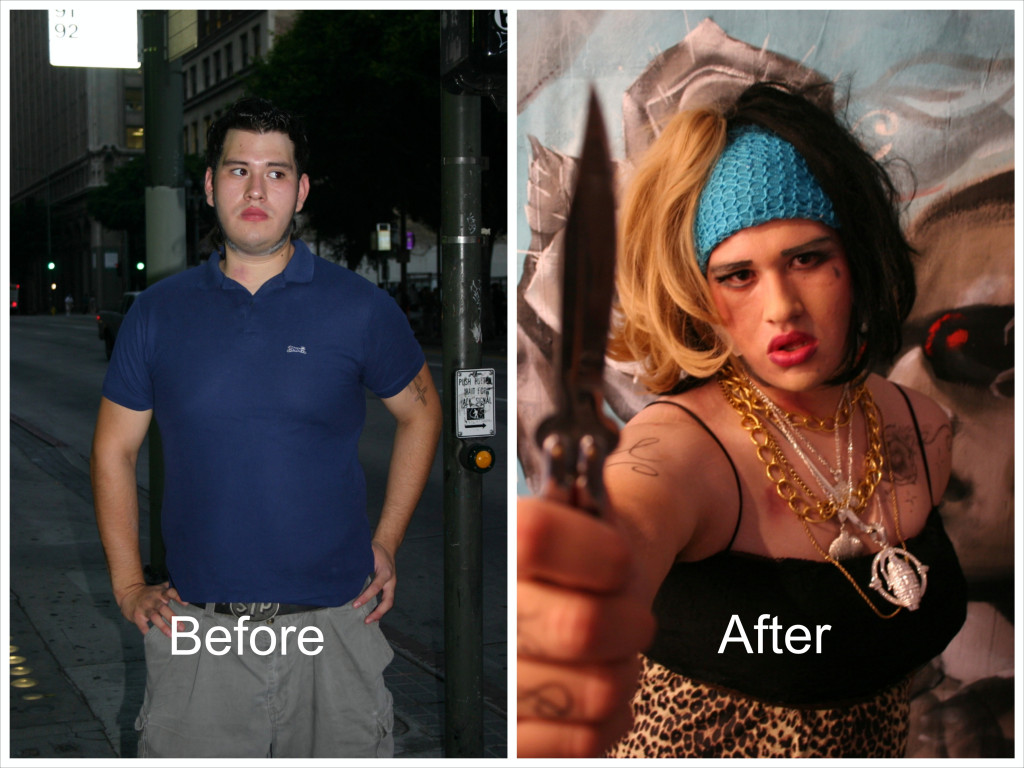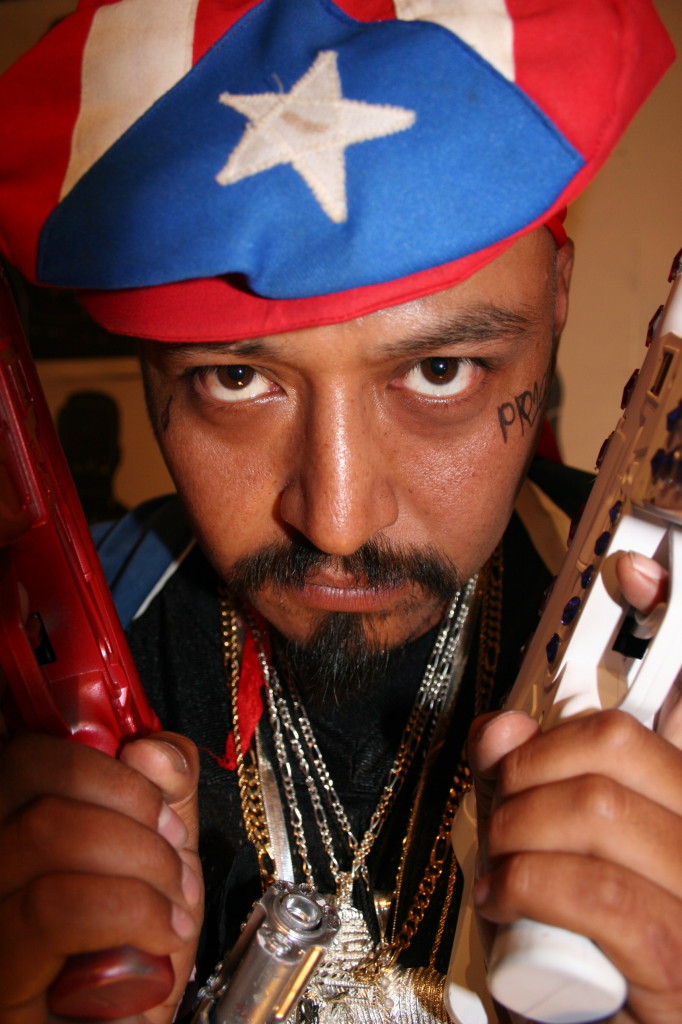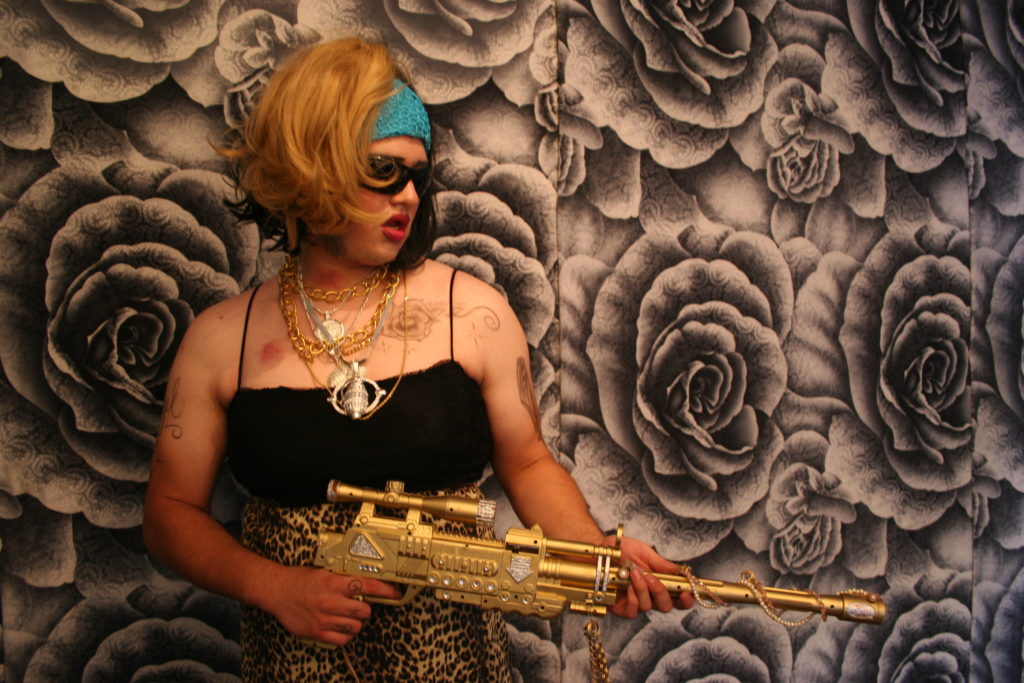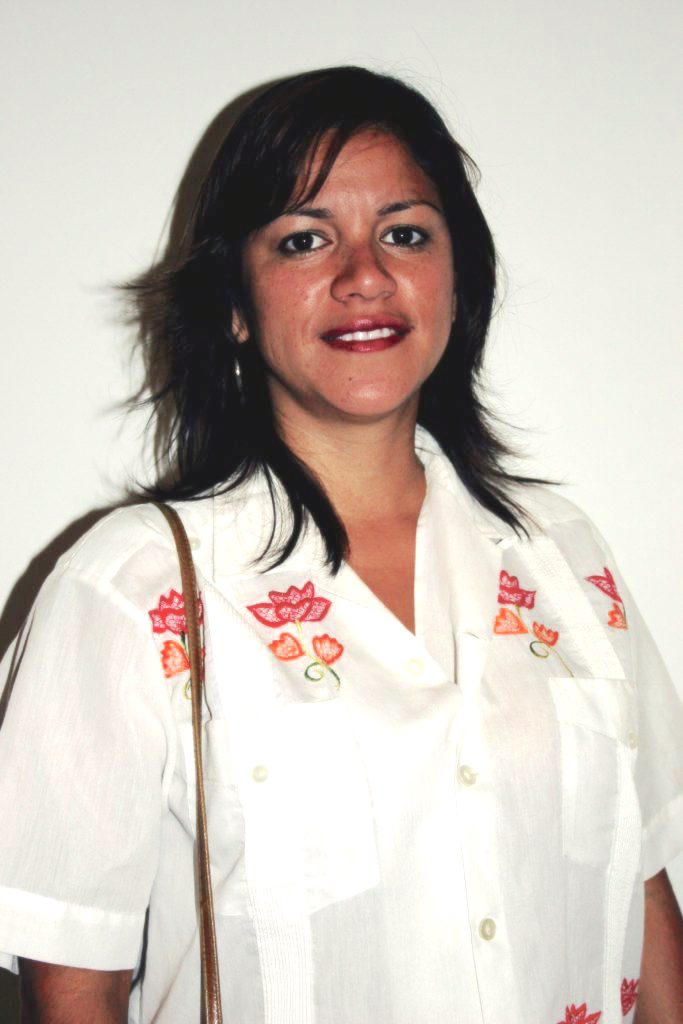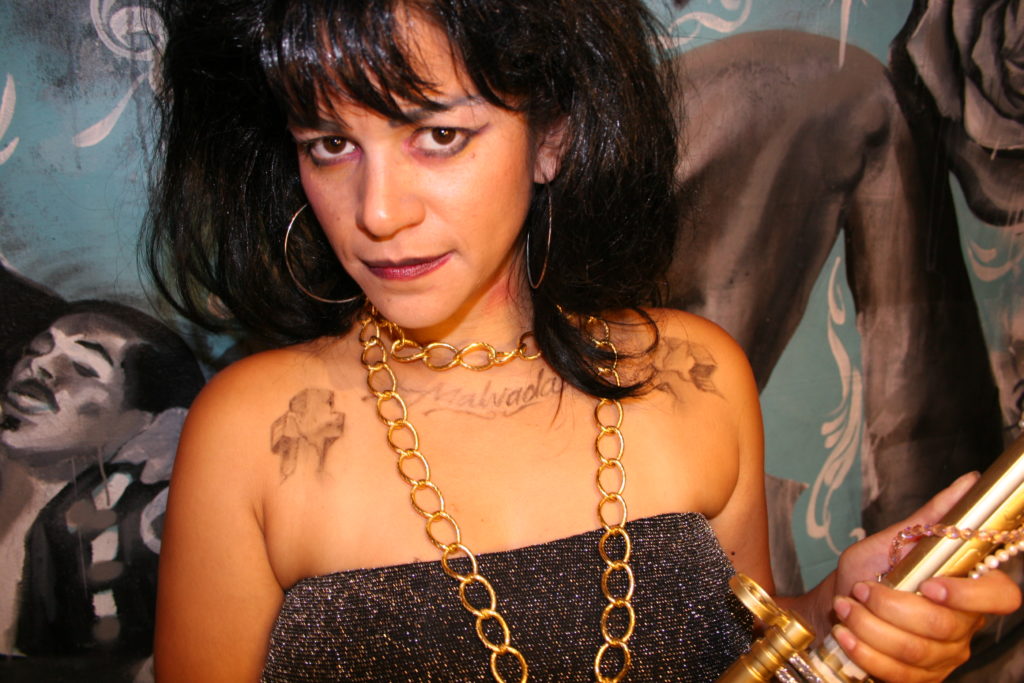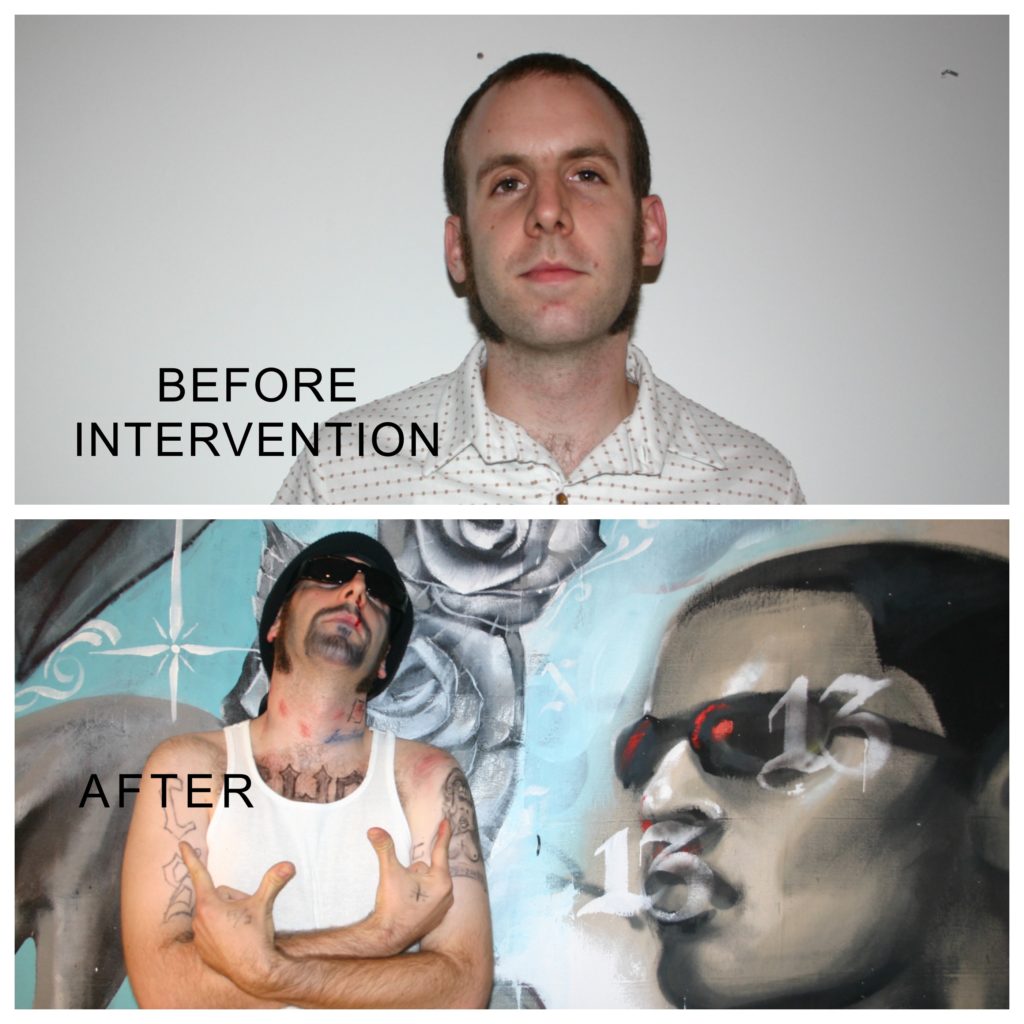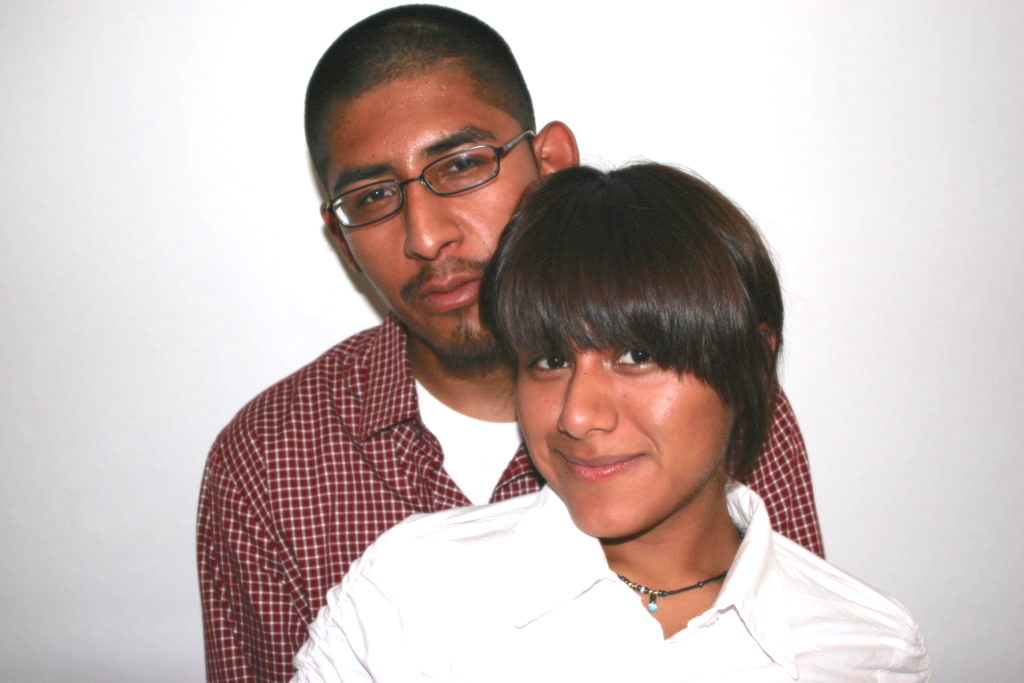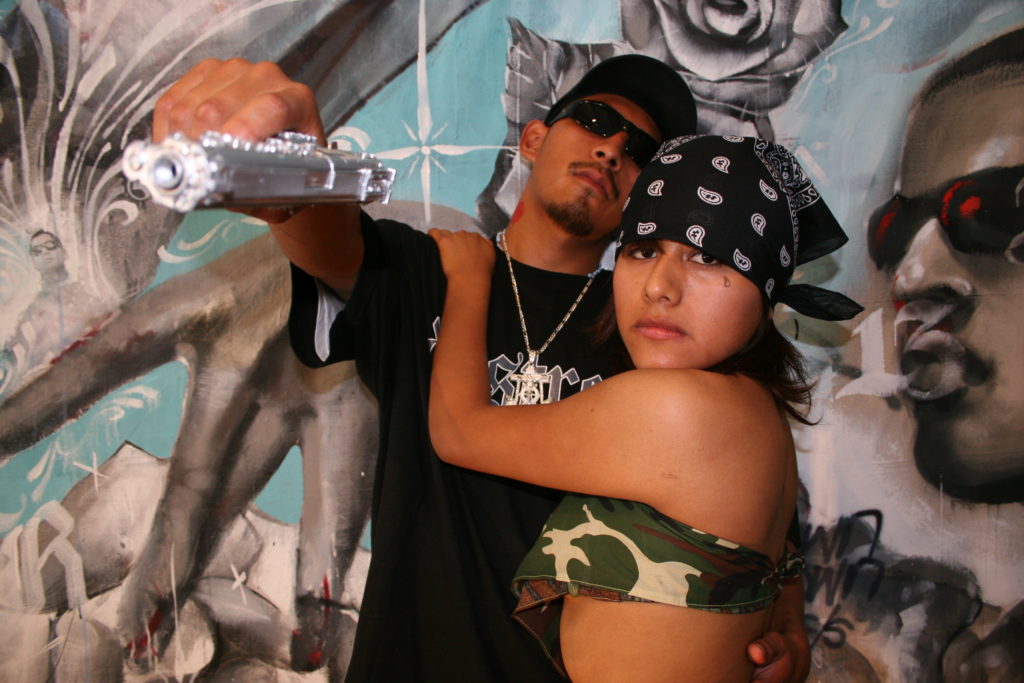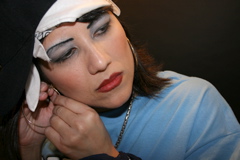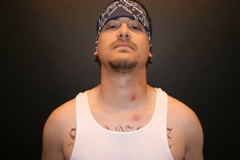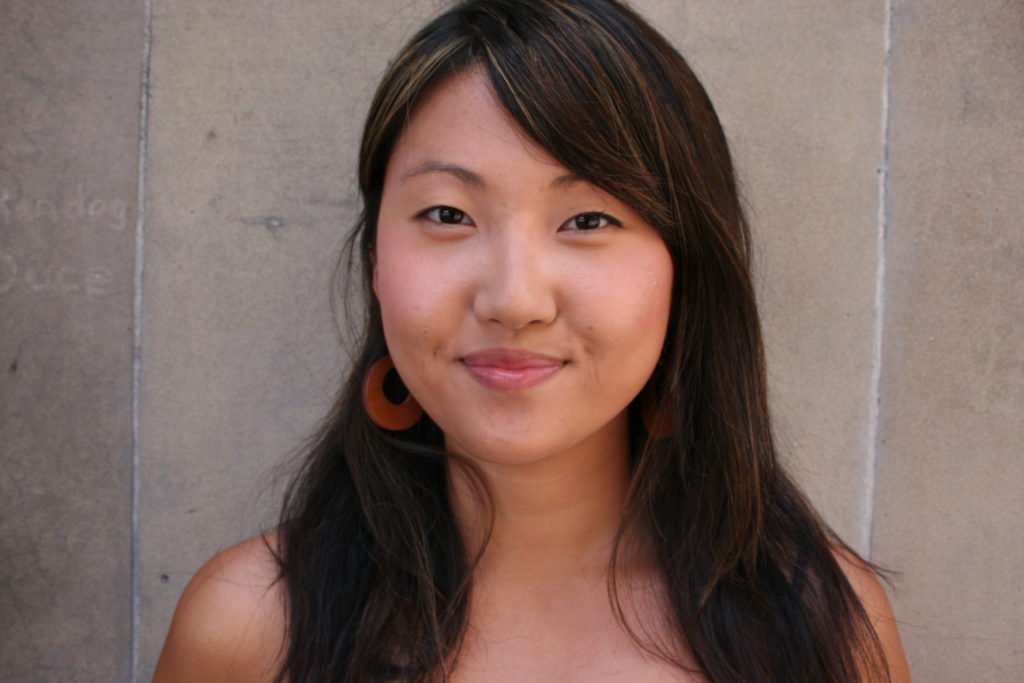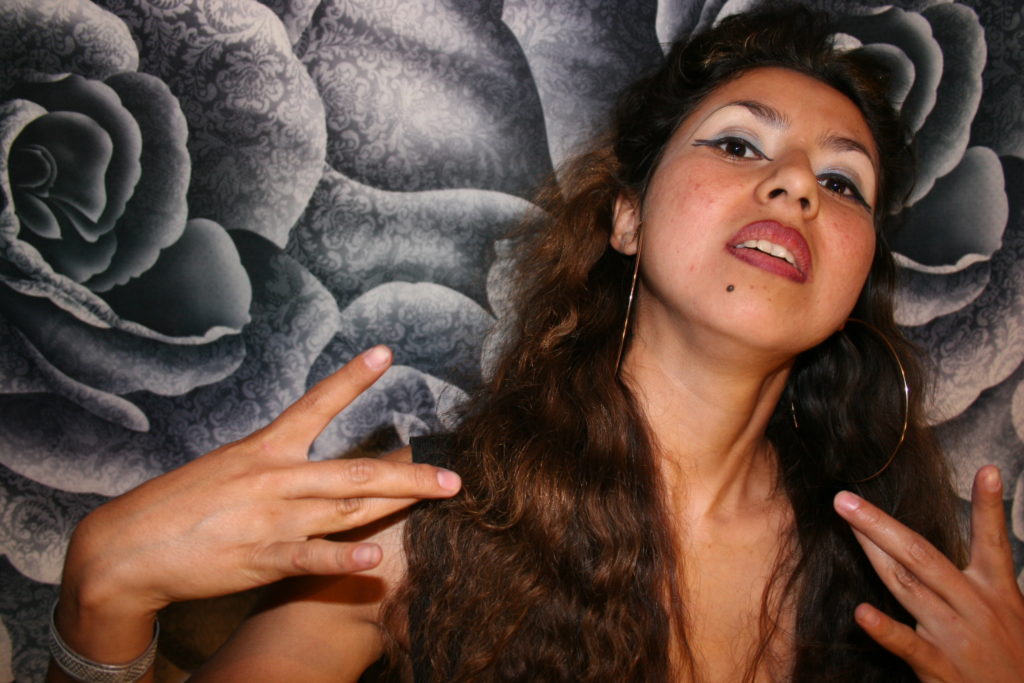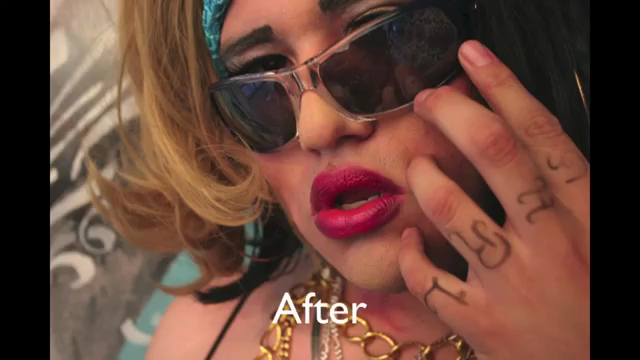
Glamour Shotz, A transformative store front beauty shop and performance–where you are the star!
In 2005, Glamour Shotz was part of a larger exhibit on gentrification. Gentrification is defined as the process of renewal and rebuilding accompanying the influx of middle-class or affluent people into deteriorating areas that often displace poorer residents and artists.
The entire exhibition was called The Store Front Project, curated by Adrian Rivas at Gallery 727, located in downtown Los Angeles, California. Adrian was inspired by the writings of Grant Kester, a Professor of Art History in the Visual Arts Department at UCSD. Each week Adrian’s store front gallery space would become a different business, mimicking the drastically changing downtown area of Los Angeles. The original concept of a Puerto Rican Pride photo studio business was that of photographer, Vanessa Sepulveda Shaushkin. Multi-disciplinary artist Raul Baltazar added the self-scripted and impromptu political performance aspect to the store as the store front security guard, greeter, club barker and host.
Rigo Maldonado and Victoria Delgadillo were agitated with the sudden American media approval of Gwen Stefani (lead singer of No Doubt) dressed like a Chola. A Chola is a Mexican/Chicano term used to refer to a teenage girl who is closely associated to a street gang and dresses in a unique (non-mainstream) style of make-up, hair, and clothing.
The Chola style has been common in California barrios, since the 1920s. In California, teens dressed in a Chola/o fashion walking on a public street were/are photographed by the police and placed in a gang member file, even if they are not in a gang. Public schools have punished teens who dress in this fashion. To witness a media campaign on Chola attire being acceptable, because a white woman is wearing it, is offending to decades of Latino teens in California (and Mexico) who have been persecuted for this style.
As the two principal curators, Rigo Maldonado and Victoria Delgadillo scripted the various scenarios that would transpire in this beauty make over photo studio called Glamour Shotz. Initially there was a curatory desire to beckon gentrifiers to wear the Cholo style, because it was a way of “returning the gaze” [Anna Everett, Returning the Gaze: A Genealogy of Black Film Criticism, 1909 -1949 – March 12, 2001.] Rigo Maldonado created the above promo piece made for Glamour Shotz.
The concept of engaging people who were passing by to agree to a free make-over failed. People passing by seemed uncomfortable wearing the gang style. Yet people lingered with curiosity outside and across the street, to view the process through the store window. Fortunately, the organizers’ artistic community loved playing the roles and getting their glamour shotz. Drop-by artists enjoyed creating some of the makeovers as well. Ms 40oz, Jennifer Salinas was an actual Miss Teen America contestant from Chicago, who performed a gang style blessing for all the fallen hommies (gang members), with a pseudo ribbon-cutting ceremony for the the Glamour Shotz storefront. Victoria Delgadillo’s family owned businesses in San Diego. The two elements they had for a successful grand opening was a mural unveiling and a mariachi band. Victoria brought these ideas to Glamour Shotz (writing, directing and producing the grand opeing performance). See segment above “Ms 40 oz.”
The week long Glamour Shotz installation store culminated with a fashion show.
[Note: “Aztec Gold vs Glamour Shots” a documentation here by Victor Payan and Pocha Pena recaps the scenarios and store front space as it was conceived by curators Rigo Maldonado and Victoria Delgadillo. The beautiful mural “Fallen Cholo” was created and painted by muralist/artist Midst for Glamour Shots. The mural made a perfect backdrop for our urban transformations.]
